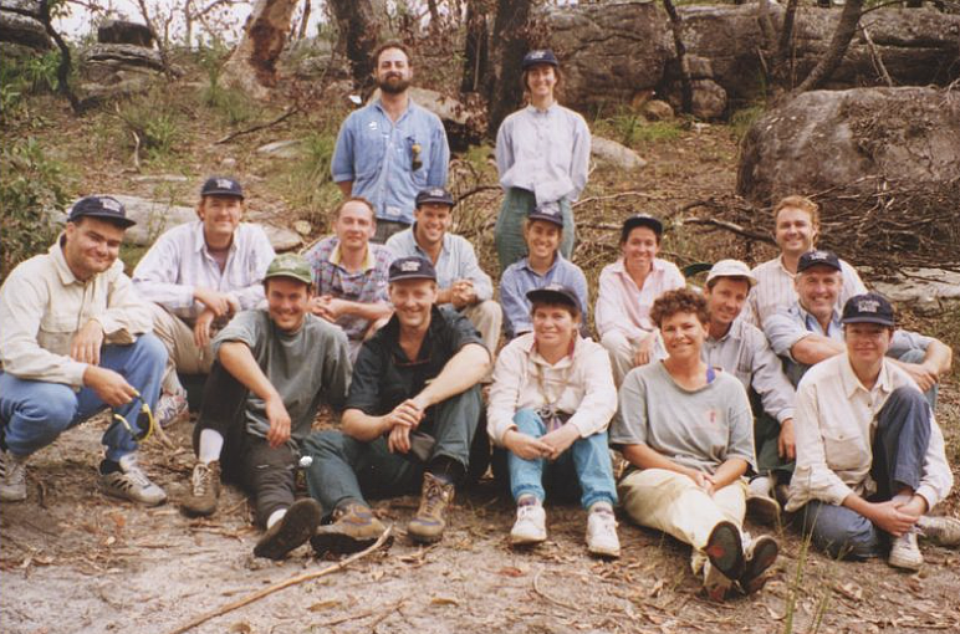
ICDA and BoardPro partnership unlocks digital governance tools for not-for-profits nationwide
Posted on 10 Dec 2025
Adele Stowe-Lindner, Executive Director, Community Directors The Institute of Community Directors…
Posted on 11 Dec 2024
By Greg Thom, journalist, Institute f Community Directors Australia

One of the chief architects of the recently released roadmap on the future of the not-for-profit sector has acknowledged the years of broken promises and inaction linked to previous efforts at reform.
Professor Jo Barraket, director of the Melbourne Social Equity Institute at the University of Melbourne, highlighted the two years of hard work and extensive consultation behind the Not-for-Profit Sector Development Blueprint.
However, Barraket, who served as an expert advisor on the Blueprint Expert reference Group (BERG) also conceded that some in the sector could be forgiven for thinking they had seen it all before.
“I can really respect the frustration that people feel about 30 years of unrealised reform agendas and what it feels like being asked the same questions over and over again,” she said.
Speaking during an Australian Council of Social Service (ACOSS) policy webinar, Barraket said her involvement in the Blueprint had reinforced to her how necessary it was to do the hard yards to achieve real reform.

“My involvement in the Blueprint really illuminated for me how institutional memory disappears fairly quickly, particularly in a political and government context,” she said.
“It has been a process of reminding people who knew (about necessary reforms) in the past and introducing to people and institutions who really are not familiar with both the work and the importance as well as the needs of the not-for-profit sector.
“That has felt to me like a very necessary process.”
The long-awaited Blueprint was handed to the federal government on November 29.
The report was compiled by the Blueprint Expert Reference Group (BERG), established by the federal government to help “guide government reform and sector-led initiatives to better support and connect with communities.”
The Blueprint contains 18 recommendations listed under three broad pillars:
The Blueprint contains a long list of diverse recommendations ranging from prioritising cross-jurisdictional harmonisation of standards and regulations in the sector to tackling climate change and broadening and simplifying the deductible gift recipient (DGR) tax regime.
The BERG has asked the federal government to respond to the report by March 31.
“A great deal of care was taken in the Blueprint itself to set out actionable reform pathways for every single initiative that has been prioritised.”
Barraket said one of the key differences between the Blueprint and previous inquiries and reports was its emphasis on finding practical solutions to pressing sector issues.
“A great deal of care was taken in the Blueprint itself to set out actionable reform pathways for every single initiative that has been prioritised,” she said.

“That doesn’t mean there’s only one pathway to achieving an outcome in every case. There are others, but what we did and wanted, was setting out the existing evidence of a problem and an actual determined pathway and how might we practically implement that.”
Barraket said it was important to view the recommendations contained in the Blueprint not in isolation but as a roadmap for the future of the sector.
“The Blueprint initiatives are not intended to be a shopping list. It is intended to have some level of integration.”
Barraket said the success of the Blueprint in addressing sector concerns was not guaranteed.
“It will rise or fall according to the level of engagement by the sector itself and then the championship of the Blueprint via the sector with government.”
Achieving bipartisan political support will be crucial, she said.
“BERG was very clear, that this is a plan to be delivered to the Albanese government, but it is not a plan only for response from the Albanese government,” said Barraket.
“To get to the kinds of reforms the sector needs and indeed, Australia needs, its going to need support not just from mainstream parties but across the Parliament.”
The BERG process was kick-started with the release of an issues paper in November 2023 and included consultative roundtables involving 240 people and multiple departmental and governmental briefings.
The inquiry received 163 submissions, many of which were summarised in a synthesis report released in September which articulated the most pressing issues.
ACOSS CEO Cassandra Goldie agreed that ensuring the Blueprint was successful and resulted in real reform would require a combined effort from the sector and government.
“Whether this is a signature milestone or an historical footnote in large part depends on the ambition, tenacity, and determination of those of us that are gathered around this shared vision set out in this blueprint.
“Many of the great innovations of our sector start with us building coalitions and collaboration, introducing new ways of doing things and then often, getting a slow-moving government to get on board,” said Goldie.
“So, breathing life into this blueprint will take all of us – universities, community organisations, philanthropists, people in communities, to name just a few of the key allies.”
ICDA Not-for-Profit Sector Development Blueprint Lunch & Learn webinar (Dec 19)
Blueprint reveals ten-year vision for a thriving NFP sector
NFPs call a spade a spade in in response to issues paper on future of sector

Posted on 10 Dec 2025
Adele Stowe-Lindner, Executive Director, Community Directors The Institute of Community Directors…

Posted on 10 Dec 2025
The Australia Institute has called on the federal government to force Australian businesses to be…

Posted on 10 Dec 2025
Economic empowerment is essential to enabling recovery, restoring agency and preventing future…
Posted on 10 Dec 2025
A long-time advocate for rough sleepers in northern New South Wales has been named her state’s…

Posted on 10 Dec 2025
What a year 2025 has been, particularly at a national level where the Parliament and politics as we…

Posted on 10 Dec 2025
Anyone working in an organisation knows it: meetings follow one after another at a frantic pace. On…

Posted on 10 Dec 2025
As a qualified yoga instructor who learned the practice in her hometown of Mumbai, Ruhee Meghani…

Posted on 10 Dec 2025
Community Directors trainer Jon Staley knows from first-hand experience the cost of ignoring…

Posted on 10 Dec 2025
Stressed, overwhelmed, exhausted… if you’re on a not-for-profit board and these words sound…

Posted on 10 Dec 2025
The Institute of Community Directors Australia trains over 22,000 people each year, which gives us…

Posted on 09 Dec 2025
The late Sir Vincent Fairfax is remembered as a business leader, a chairman of AMP, and an active…

Posted on 08 Dec 2025
A pioneering welfare effort that helps solo mums into self-employment, a First Nations-led impact…